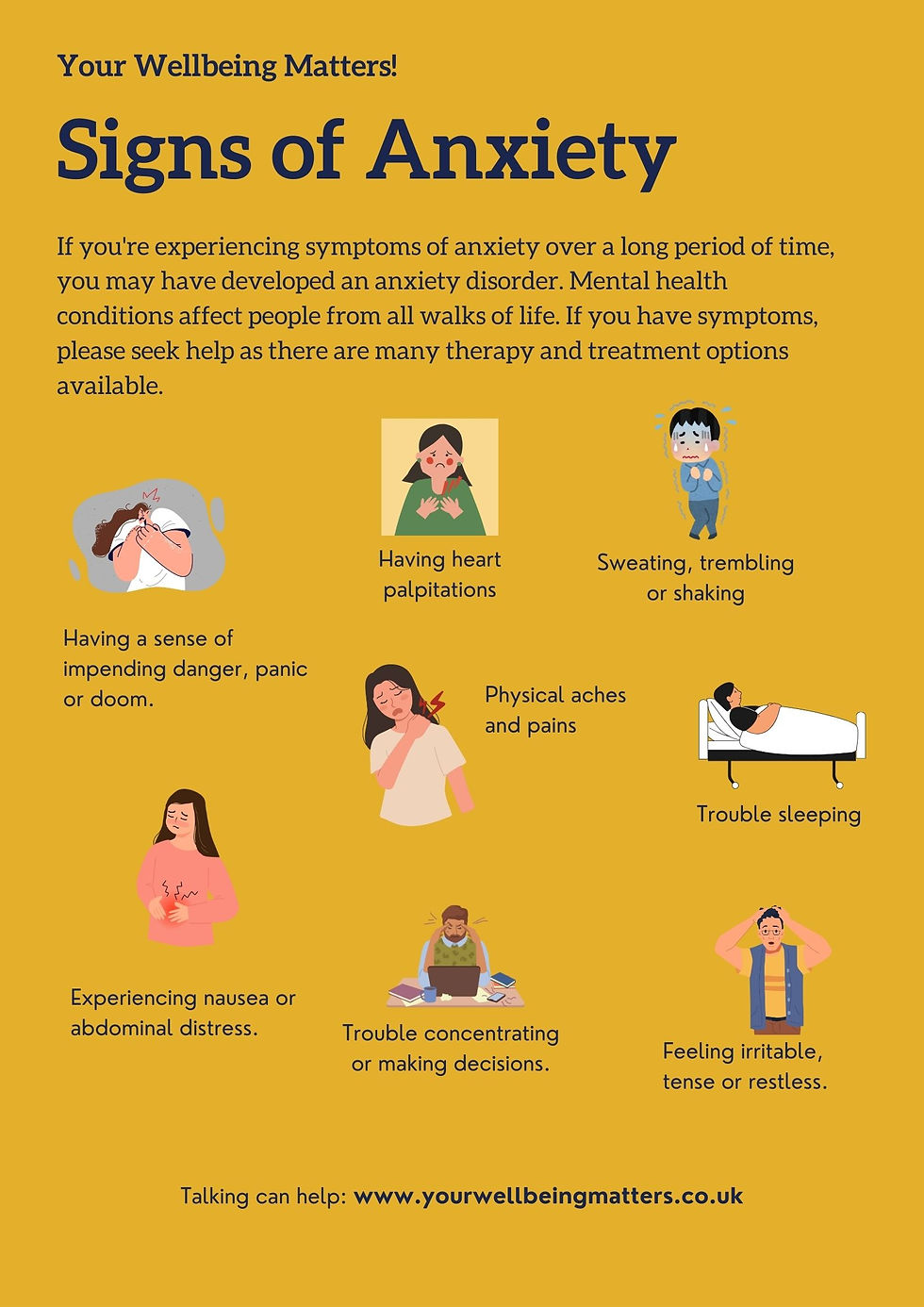Anxiety Awareness: Recognising the Signs and Seeking Help
- Melanie Rivera

- Jul 2, 2024
- 2 min read

Anxiety is a common mental health condition that affects millions of people worldwide. It manifests in various ways, and understanding its signs and triggers can help in managing it effectively.
This post discusses some key signs of anxiety and an overview of how it affects the brain and body.
Recognising the Signs of Anxiety:
o Restlessness: A constant feeling of being on edge, unable to relax.
o A Sense of Dread or Fear: Experiencing an overwhelming sense of impending
doom or fear.
o Feeling Constantly "On Edge": Being easily startled or feeling jittery.
o Difficulty Concentrating: Struggling to focus on tasks or maintain attention.
o Irritability: Becoming easily annoyed or agitated.
Understanding What Triggers Anxiety:
When our senses detect a threat – a loud noise, a scary sight, or a creepy feeling – the brain processes this information through two different pathways. Here's how it works:
Immediate Response (The Shortcut):
The brain has an emergency hotline to its fear centre, the amygdala.
When startled, the amygdala is quickly activated and sends an alert to other brain structures. This triggers the classic fear response: sweaty palms, rapid heartbeat, increased blood pressure, and a burst of adrenaline. All of this happens before the conscious mind is aware of the threat.
Body's Response:
The amygdala activates a series of changes in brain chemicals and hormones, putting the body into anxiety mode.
The adrenal glands pump out high levels of cortisol, the stress hormone, in response to signals from the hypothalamus and pituitary gland.
High cortisol levels can disrupt the cells in the hippocampus, making it difficult to organize and contextualize memories of stressful experiences.
Physical Symptoms of Anxiety:
Racing Heartbeat: The sympathetic nervous system shifts into overdrive, causing the heart to beat faster.
Increased Blood Pressure and Hyperventilation: Blood pressure rises, and the lungs begin to hyperventilate, leading to rapid breathing.
Sweating and Goose Bumps: Sweat production increases, and nerve endings on the skin become activated, causing goosebumps.
The High Road to Processing Fear:
Some sensory information takes a more circuitous route, stopping first at the thalamus and then travelling to the cortex for processing.
Only after the initial fear response does the conscious mind become aware and begin to understand why we are afraid.
Seeking Help:
If you or someone you know is experiencing these signs of anxiety, it's important to seek help. Anxiety is a treatable condition, and various therapies and treatments are available to manage its symptoms. These include:
Psychotherapy: Cognitive-behavioural therapy (CBT), Integrative Therapy and other forms of counselling can help in understanding and managing anxiety.
Medication: Antidepressants and anti-anxiety medications can be prescribed by a healthcare professional.
Lifestyle Changes: Regular exercise, a healthy diet, and mindfulness practices can significantly reduce anxiety symptoms.
Support Systems: Engaging with support groups, friends, and family can provide emotional support and practical advice.
Conclusion:
Understanding anxiety and its impact on the brain and body is crucial for managing it effectively. By recognising the signs and seeking appropriate help, individuals can lead a more balanced and fulfilling life. Remember, you are not alone, and support is available.




Comments